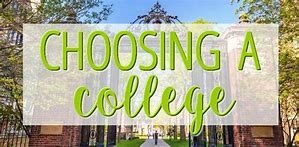- “We really didn’t think we needed a consultant.”
- “We thought we could handle it in-house.”
- “We just didn’t have the money to pay for a consultant.”
- “We’re a small institution. Surely ____ will take that into consideration during the site visit.”
I’d venture a guess that very few higher education institutions build external consulting fees into their annual budgets. Administrators make sure all the essentials are covered, such as hiring faculty and staff, facility and grounds maintenance, advertising, travel, IT infrastructure, legal fees, and the like. But hardly any ever plan for needing to hire a consultant to help with compliance and accreditation matters.
That’s because higher education administrators never think they need outside guidance. Until they realize that they do.
And many times, they come to this realization very late in the accreditation game. I’ve received calls from frantic department chairs, deans, and presidents whose anxiety you could literally feel through the phone.
They thought they had things under control, and then something happened that threw their plans out of orbit. Over the years, I’ve been brought in when a key faculty member, assessment coordinator, or department chair has taken a job with another university. I’ve also been called when the institution’s dean had been incompetent for many years and executive leaders allowed him to stay in that position. Those leaders thought the path of least resistance was to stay the course and it worked for a while with others providing cover, but then they discovered by accident that the institution was scheduled for a national accreditation site review in a few months.
I’ve also been called on to help when the horse has already left the stall – when an institution actually had lost their accreditation and by default, their state program approval. They had students enrolled in multiple programs, but were unable to recommend them for state licensure because they were no longer authorized to do so.
As one might imagine, those situations are messy. They are uncomfortable. But these are when an experienced consultant is well worth their fee. Of course, no consultant can ever guarantee a positive end result–that’s impossible–but someone with the right skill set and expertise can get an institution back on solid footing and headed back in the right direction.
CHEA fellow Rachel Smith recently penned a thoughtful piece that presents the benefits and drawbacks of hiring independent contractors. She also offers some alternatives for higher education administrators to consider if for whatever reason a paid consultant just isn’t feasible. It’s a useful guide to keep handy.
In this ever-changing landscape of state, regional, and national regulations, it can be a comfort to know that when the chips are down and the stakes are high, an experienced consultant’s fees can be money well spent.
###
About the Author: A former public school teacher and college administrator, Dr. Roberta Ross-Fisher provides consultative support to colleges and universities in quality assurance, accreditation, educator preparation and competency-based education. Specialty: Council for the Accreditation of Educator Preparation (CAEP). She can be reached at: Roberta@globaleducationalconsulting.com
Top Graphic Credit: Dan Dimmock on Unsplash






